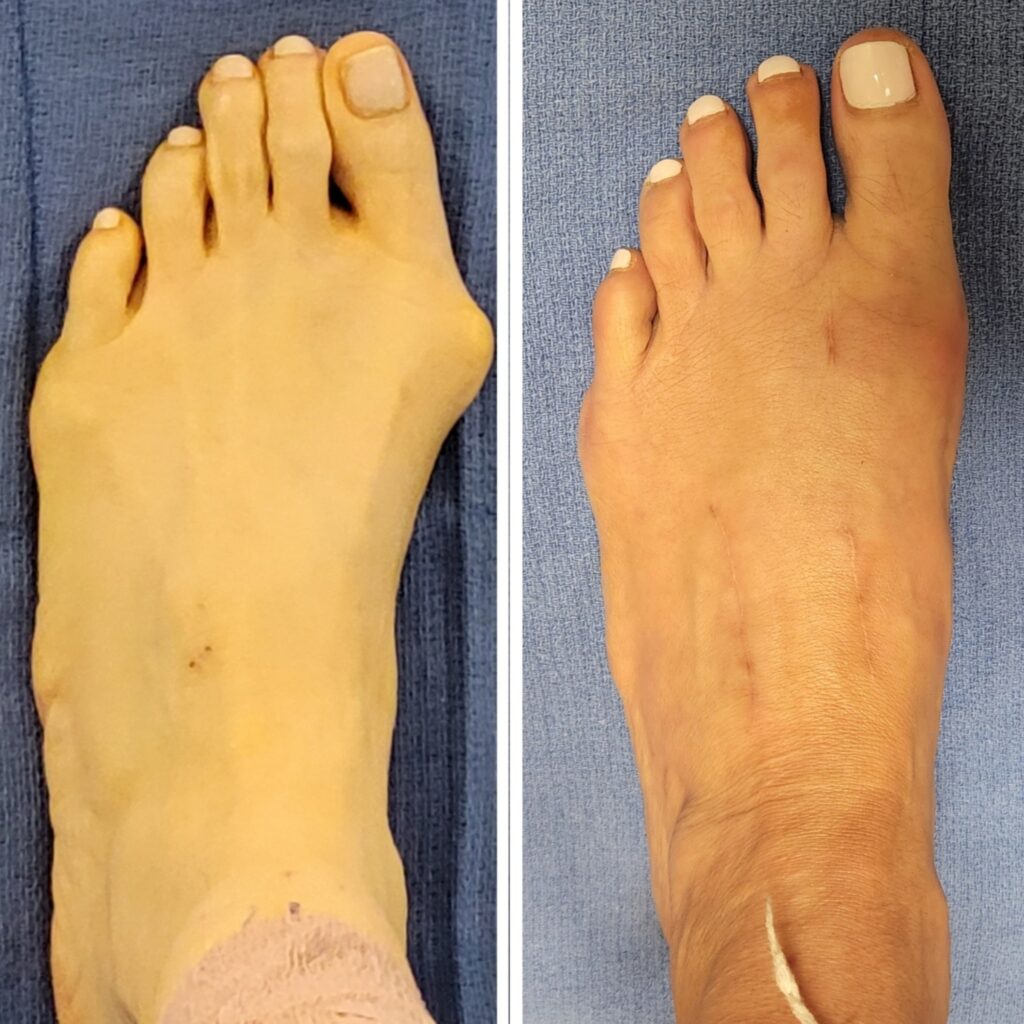Acute Postoperative Pain Following Bunionectomy, a surgical procedure to correct hallux valgus deformity, often results in significant acute postoperative pain. Proper pain management is crucial for enhancing patient comfort, reducing complications, and expediting recovery. This article explores the causes of postoperative pain, available treatment modalities, and strategies for optimal pain relief.

Causes of Acute Postoperative Pain
Post-bunionectomy pain arises due to several physiological and mechanical factors:
- Surgical Trauma: Tissue incision, osteotomy, and soft tissue manipulation induce pain and inflammation.
- Nerve Irritation: The medial dorsal cutaneous nerve may be affected, leading to neuropathic pain.
- Edema and Swelling: Postoperative fluid accumulation exerts pressure on surrounding tissues, exacerbating discomfort.
- Bone Healing Process: The natural bone remodeling phase may contribute to prolonged sensitivity and pain.
- Immobilization Effects: Limited movement can cause stiffness and discomfort in the affected foot.
Pain Management Strategies
1. Pharmacological Approaches
Effective pain relief involves a combination of medications:
- Nonsteroidal Anti-Inflammatory Drugs (NSAIDs): Ibuprofen, naproxen, and celecoxib reduce inflammation and mild to moderate pain.
- Acetaminophen: Used alone or in combination with NSAIDs for additional pain relief.
- Opioids: Short-term use of oxycodone or hydrocodone for severe pain, with caution to prevent dependency.
- Local Anesthetics: Peripheral nerve blocks (e.g., popliteal or ankle block) provide prolonged analgesia post-surgery.
- Gabapentinoids: Gabapentin or pregabalin can help in managing neuropathic pain.
2. Non-Pharmacological Pain Management
Complementary strategies enhance pain control and improve recovery outcomes:
- Cryotherapy (Ice Therapy): Reduces swelling and numbs nerve endings to alleviate pain.
- Elevation and Compression: Helps minimize fluid accumulation and associated discomfort.
- Physical Therapy and Early Mobilization: Encourages blood circulation and prevents joint stiffness.
- Transcutaneous Electrical Nerve Stimulation (TENS): Modulates pain signals and improves comfort.
- Mind-Body Techniques: Relaxation exercises and meditation aid in reducing pain perception.
Postoperative Recovery and Rehabilitation
Recovery from a bunionectomy varies by individual but typically follows these phases:
- First 72 Hours: Acute pain, swelling, and restricted mobility require strict adherence to medication and rest.
- Weeks 1-2: Gradual weight-bearing may be introduced using a surgical shoe or crutches.
- Weeks 3-6: Continued pain reduction with progressive movement exercises.
- Beyond 6 Weeks: Residual discomfort may persist, but normal activities gradually resume.
Complications and When to Seek Medical Attention
While pain is expected post-surgery, severe or prolonged pain may indicate complications such as:
- Infection: Signs include persistent redness, warmth, or drainage from the incision site.
- Deep Vein Thrombosis (DVT): Leg swelling and pain could suggest a clot formation.
- Nonunion or Malunion: Improper bone healing may lead to persistent pain and deformity.
- Complex Regional Pain Syndrome (CRPS): Unexplained, severe pain requiring specialized intervention.
Effective pain management following bunionectomy is critical for a smooth recovery. A multimodal approach combining pharmacologic and non-pharmacologic interventions ensures optimal pain control and functional restoration. Patients should adhere to postoperative care instructions and seek medical guidance if pain persists beyond expected recovery timelines.